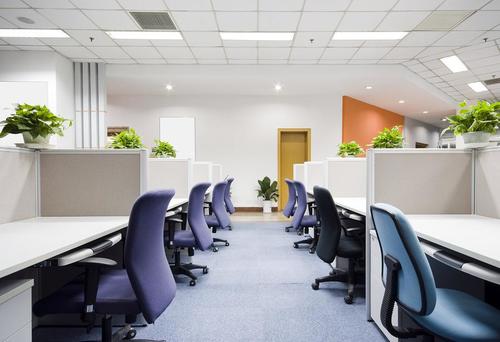What should have taken a decade has literally happened overnight. The professionals have all gone home. Many already have physically relocated.
We were evolving to this, but the last tools fell into place this past decade. Cloud computing and ZOOM meetings and who needs a two hour commute. Better yet, at home it becomes possible to optimize your time as well. Once the new productivity habits are in place, you will not go back.
This does not work for all but certainly for all who produce and manipulate information. That was the majority of office work.
The other hidden boom is the back to a real home town for these workers. The compact city does not look so wonderful now. Depopulation of hte urban environment will be different but still a thing.
.
Inventory Soars As Companies Dump Record Volume Of Office Space
BY TYLER DURDEN
SATURDAY, DEC 26, 2020 - 13:00
https://www.zerohedge.com/markets/companies-dump-office-space-inventory-swells
There is absolutely no way to avoid a great deal of pain coming to the commercial real estate market in 2021 as companies dump record volumes of office space onto the sublease market, according to FT.
Commercial real estate analysts warn that the amount of sublease inventory in top US markets is at or now exceeding levels of the Dot Com bust and the Great Financial Crisis.
Bank of America and SalesForce are the latest companies extending remote working options for employees. These analysts now believe the office space market may not recover even though the broader economy rebounds.
Daniel Ismail, the office analyst at Green Street Advisors, a real estate research firm, said the country "just underwent what will end up being close to a year-long work-from-home experiment, and the results continue to show for themselves."
"You have a company every other week saying how successful work-from-home has been for them, and their plans to reduce or shrink their total office space needs," Ismail said.
He believes that demand for office spaces could be down 10 to 15% even after the economy recovers, adding that rents in top markets such as New York and San Francisco will continue to experience declines in 2021.
Ismail said work workplace changes (remote working), which were supposed to take 4 to 5 years to unfold, are happening in a matter of quarters.
"We're turning on a dime," he said.
FT cites other real estate analysts that say sublease inventory has surged across major US markets this year.
In the largest office space market, New York City, Cushman & Wakefield estimated subleasing space was at an all-time high of 18 million square feet as of November, up from 10.5 million square feet compared to November 2019.
Taking a look at Manhattan sublease space, inventory in the third quarter was 16.1 million square feet, up 46.8% since the start of the year, and near the record high of 16.3 million square feet observed in 2009.
New York City commercial real estate is on shaky ground as Mayor Bill de Blasio has actively transformed Manhattan into a (crime infested) ghost down as companies and residents flee the metro area.
According to Savills, the Bay Area of San Francisco recorded a 148% jump in sublease inventory through September. Lately, Pinterest canceled a 490,000 square feet lease in the city. Twitter also pulled the plug on 105,000 square feet of space.
This year, the whole remote work from home phenomenon threatens the $3.4 trillion-dollar commercial real estate debt via bonds, direct loans, and securitized loan bundles.
"I don't see any way of avoiding a great deal of pain in the commercial real estate market in 2021. It is almost inevitable. My friends at the Federal Reserve and FDIC are becoming increasingly uncomfortable with what's going on in the commercial real estate world, said Cam Fine, Former President of Independent Community Bankers of America
Michael Silver, chairman of Vestian, which advises companies on commercial real estate, said developers in March "were pounding their chest and saying, the virus-induced downturn was an aberration" and everything was going to snap back. However, he said that's not the case.
Silver makes the shocking forecast that companies will only need half of their pre-pandemic office space, pushing sublease space from around 200 million square feet to more than 300 million square feet.
"The end result of this is a reset," he warned.
... and what happens to co-working companies like WeWork, who, in some metro areas, such as New York City, have recently become the largest commercial tenants?
But none of this should be surprising to readers as we noted months back that CEOs are slashing office space as remote working dominates.
The big take away: A crisis in commercial real estate lurks.
